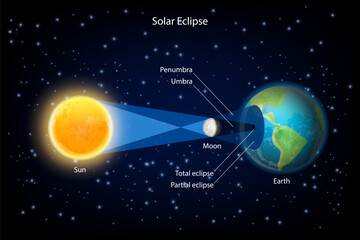A Total Eclipse is Coming to Town

From Montpelier, Vermont to Austin, Texas, in a swath of land – an eclipse path, if you will – about 115 miles (185 kilometers) wide, a total eclipse of the sun is expected to take place on April 8, 2024. It’s an eclipse that aspiring astronomers and everyone else wants to see and experience. And why not? It’s pretty darn cool, a phenomenon that reminds us that 1) science doesn’t have to be nerdy and 2) how miniscule we are as humans on our tiny planet. The universe is vast but our planet’s moon shadow hits the North American continent in a very real way for us humans. It’s going to be weirdly dark for many that day.
In North America, from Mexico to Canada, you can witness either the total eclipse or a partial eclipse. Why not pack solar viewing glasses, a telescope, and a few other supplies and get ready to experience a quiet yet spectacular natural show?
Where Is the Eclipse Path in the United States?
Starting around 12:12 pm in Austin and ending around 4:40 p.m. in Maine, the sky will darken to varying degrees in the middle of the day. The duration of the eclipse, about 2 hours and 19 minutes from start to finish, includes about 4 minutes when the sky will be totally dark in Detroit, Louisville, Montréal and other cities in the center of the path. (Get specific total eclipse times and how dark it will be for your location at Time & Date.)
How to Watch an Eclipse
NASA recommends using safe solar viewing glasses and has a few tips to help you select safe glasses to look at the sun, mid-eclipse. The American Astronomical Society suggests ways to look at the eclipse if you do not have safe solar viewing glasses.
While there isn’t much else in the way of gear you need to watch an eclipse, please consider this a reminder to be safe. If you are in the car, pull over to watch the sky darken and choose a safe place away from traffic to get the best view. We also recommend bringing along what we consider the best laser for astronomy, a green laser pointer.
Why Use a Green Astronomy Laser Pointer
While any color – red, blue or green – will do, green is almost universally the astronomy laser pointer color of choice because of how it interacts with the human eye. (Read about green laser safety here.) Our eyes are more sensitive to the region of the light spectrum in which green resides. The wavelength for green appears very bright, even at low power, approximately 30 times brighter than red, for example. Red, blue or violet lasers require more power to achieve the same level of brightness.
Using a green astronomy laser pointer gives viewers the sensation that the beam is touching the star, in this case, the sun behind the moon, it is aiming at – there will be no doubt at what object you are pointing –and it is bright enough to work effectively in light-polluted or moonlit skies. Visitors who stop by your telescope setup will be as amazed by the laser pointer as the images in the eyepiece.
For astronomy, chose any color you like. But our recommendation is to go green.
